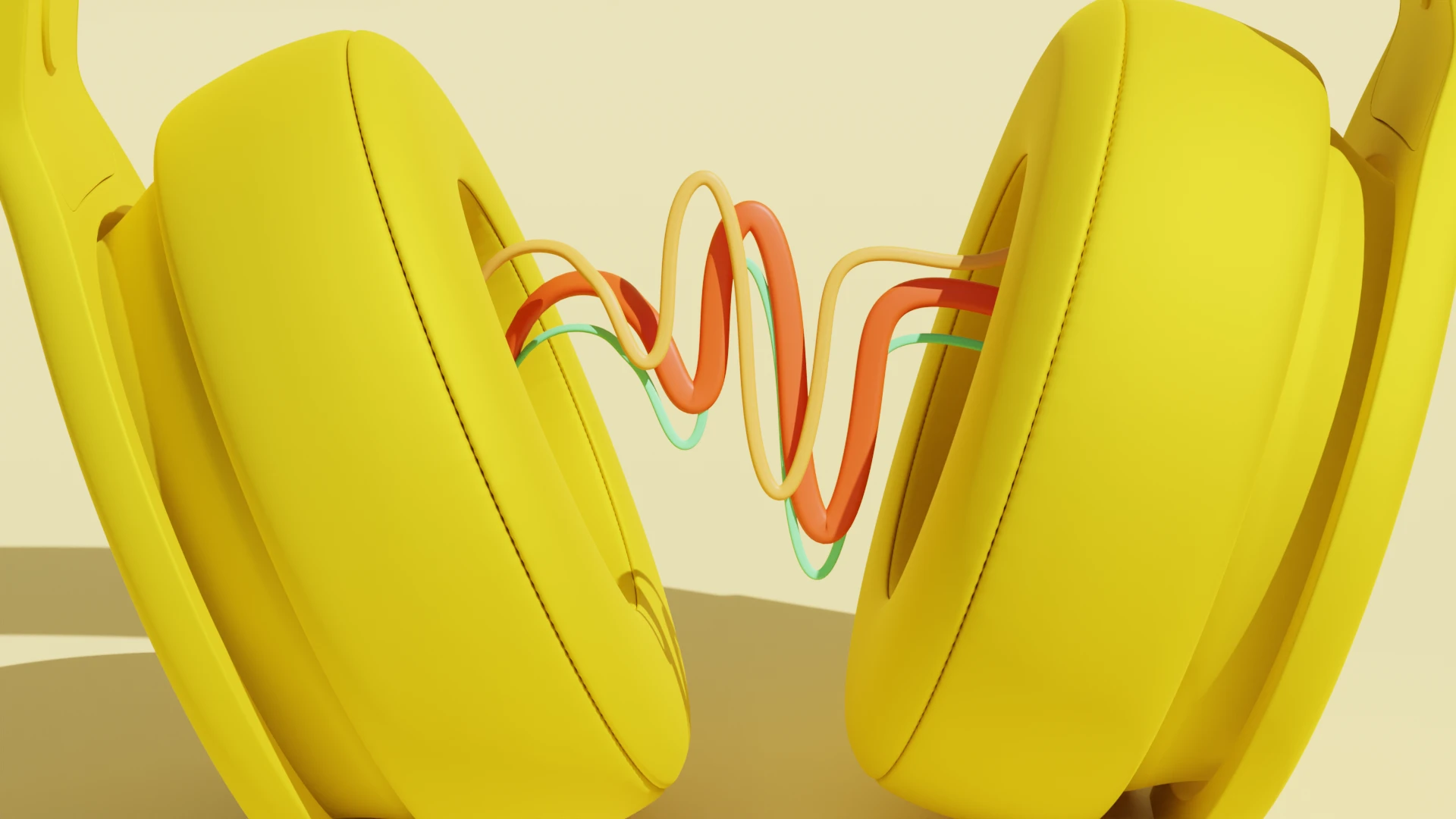What type of content do you primarily create?




Back in the old days, a person would need to book expensive studio time to get a high-quality audio recording. Today’s smartphone technology has changed all that. Every day, creators are making professional-grade video and audio recordings on iOS devices and Android devices — no pricey sound studio required.
If you’re specifically looking to record audio on an iPhone, the built-in phone mic works surprisingly well. But for truly professional sound, you’ll want to choose one of the many external microphones for iPhone available, whether it’s one that plugs into the phone’s proprietary Lightning connector (either directly or through an audio interface) or one that uses Bluetooth.
Using external microphones for iOS devices like the iPhone and iPad will improve your audio quality and unlock more post-production editing possibilities.
What makes a great microphone?
Los Angeles-based producer, composer, and audio engineer Dave McKeever has over 25 years of experience recording with microphones of all styles and price ranges. Here are his criteria for what makes a great microphone.
- Portability. Dave urges someone in the market for a microphone to think about whether they need a studio microphone that stays in one place or a portable microphone that travels with you. “Are you doing a lot of intense, remote field recording? Or will you mostly be recording at home?” Answering that question will guide you toward the right microphone.
- Directionality and polar pattern. Microphones are customized to capture sound from specific angles. For instance, an omnidirectional microphone captures sound from all directions. “You probably don’t want to buy an omnidirectional mic for recording dialogue,” Dave says. That’s because an omnidirectional mic will capture the voice of the person you want to hear, but it will also pick up all the surrounding noise you don’t want. “For podcasting and close-miking, you’ll usually want to go with a cardioid or a hyper-cardioid polar pattern,” Dave says. “This will help you minimize the room noise because you can place the speakers up close on the microphone.” If you’re not going to be able to get your subject close to the mic, consider a shotgun microphone. “A shotgun mic will still cut out a lot of background noise without being right in someone’s face,” Dave says. “That’s why this style of microphone is so ubiquitous in film and television, where they’re used as boom mics.” You could potentially connect a shotgun mic to an iPhone if you’re interviewing people on the street and need something that’s portable and aims directly at your subject.
- Power needs. The world of microphones is broken into three categories: dynamic microphones, condenser microphones, and ribbon microphones. Of the three, only a dynamic microphone can function with no outside power source. Condenser mics and ribbon mics will need phantom power (a small amount of electrical current), which usually transmits through an XLR connector cable. “If you’re running off batteries on a Zoom recorder or a smartphone, you’ll want to conserve battery life,” Dave says. In scenarios like that, a dynamic microphone is probably the way to go.
- Sensitivity. Dynamic mics, condenser mics, and ribbon mics all have their own levels of sensitivity. “A condenser or a ribbon mic is going to be a lot more sensitive than a dynamic mic,” Dave says. “As a result, you won’t need as much gain [added volume] to get a serviceable level. However, you will always need a phantom power source.”
- Durability. If you’re going to be recording outside a studio environment, durability quickly comes into play. “In general, dynamic microphones are the least sensitive to wear and tear and breakage, followed by condensers, followed by ribbon mics,” Dave says. On a basic level, this is because dynamic microphones don’t contain delicate parts; condensers and ribbon mics do. “If you are traveling around and recording things on an iPhone, do you really want to have a very sensitive microphone that could break if it’s dropped or gets wet? It may not be worth carrying around that kind of microphone.”
- Connector. Traditionally, microphones connect to other audio devices using balanced XLR cables (the ones with 3 prongs). However, iPhone microphones expand the range of options. You can plug certain mics into the Lightning port of newer iPhones or the 3.5mm headphone jack of older models. You can even find wireless Bluetooth microphones for the iPhone, which require no plugs at all. Dave sees the value in Lightning-based mics or Bluetooth mics for iPhone, but he also offers a word of warning: “Your choices will be limited. If you are always going to be in a studio or can carry around a digital audio interface, you’re probably going to want the bulletproof functionality that an XLR connector offers you.” This is because top-level microphone manufacturers don’t necessarily want to deal with Lightning, which is a proprietary port that can only be used on Apple devices, or with Bluetooth, which compresses audio signals and thereby diminishes quality.
- Form factor. In some cases, you’ll need to consider the visual aesthetics of the microphone. “Are you also doing video? Do you need to possibly hide the mic? If so, you’re probably going to want to go with a lavalier microphone that pins to the person’s clothing,” Dave says. Of course, a visible microphone may be fine for some videos, in which case you can use a handheld unit or one mounted on a mic stand.
- Capsule size. At the heart of a microphone is a capsule made of a thin membrane and a metal plate mounted right next to each other. The membrane is also called a diaphragm, the size of which varies by microphone model. A condenser capsule works slightly differently than a dynamic capsule, but they both vary based on the size of the diaphragm. “If you are recording vocals, it is better to use a large-diaphragm condenser microphone, or — if you prefer — a dynamic microphone with a large capsule, like a Shure SM-7B. Traditionally you’d use a small diaphragm microphone for recording instruments.” In part, this is because a larger diaphragm vibrates more readily and may be more responsive to the “breathy” sounds at the very bottom and very top of the human vocal register. Instruments tend to produce more focused frequencies, which makes them a good match for smaller diaphragms, which may not vibrate quite as readily.
10 best external microphones for the iPhone
As you explore your different options for iPhone mics, you’ll come across models with different means of connection. These include connecting via Bluetooth, connecting via the iPhone’s proprietary Lightning port, connecting via a 3.5mm plug, or using an audio interface that enables XLR microphones (the industry standard).
For maximum flexibility, Dave recommends the interface route. “Apogee makes really good interfaces for iOS devices,” he says. “They connect to an iPhone’s lightning connector and can provide phantom power. That opens you up to use whatever microphone you want, and flexibility is key.”
Interfaces like these allow you to connect XLR microphones to your iPhone, which means you can use the standard favored by audio professionals throughout all sectors of the recording industry. It also allows you to use more than just your iPhone: if you get an XLR mic, you can plug it into any mixing board or audio interface. If your mic has a Lightning plug on the end of it, it can’t be used in anything but an iPhone.
Here are 10 microphone models to consider as part of your iPhone microphone search:
- Rode i-XY. For Lightning-based iPhone microphones, Dave loves the Rode i-XY. “It’s a stereo mic, so it’s really good for capturing ambient sound. If you want ambient sounds to give your podcast more depth, they’re great for that. You can also use them up close, but when you use a stereo mic up close, it ceases to sound like it’s recording in stereo.” Plus, like all stereo microphones, you can use the i-XY for mid/side processing in the studio. That will turn a stereo signal into separate mono and stereo channels for even more depth and direction. The Rode i-XY plugs right into the iPhone’s lightning port. It’s a condenser microphone, so it will draw power from the phone’s battery.
- Rode VideoMic me-L. This Rode mic is a condenser with a cardioid polar pattern, which means it’s most sensitive to sound coming directly from the front. Top-end studios abound with condenser microphones, and the cardioid polar pattern tends to be the best for capturing the sounds you want with minimal background noise. The VideoMic me-L can connect via a Lightning cable or a 3.5mm headphone cable for older iPhones or certain Android devices.
- Zoom iQ6. This is another Lightning-based stereo microphone that plugs right into the iPhone and takes up very little space. It offers similar functionality to the Rode models, but it may be preferable if you own other Zoom products and you’re used to the company’s interfaces.
- BONAOK Wireless Bluetooth Microphone. If Bluetooth is your thing, you can use this BONAOK model as a wireless Bluetooth mic for iPhone. Will this provide you with top-of-the-line audio quality? Probably not — it’s hardly a premium product, and the Bluetooth radio signal will compress your audio fidelity. But it does have a very low price point and easy Bluetooth pairing with iOS devices and Android devices. And for many people, that’s all you need.
- Movo WMIC50 2.4GHz Wireless Lavalier Microphone System. This is another budget option that uses a lavalier (a clip-on microphone for recording speech). These attach to your clothing and can be hidden if needed. They also keep your hands free, since you won’t have to hold a microphone. The lavalier plugs into a transmitter unit that communicates wirelessly with a receiver plugged into the 3.5mm headphone jack on your phone. You may need a Lightning-to-headphone connector to make it compatible with recent iPhone models.
- Shure SM58. We now move into microphones that require XLR connectors. An XLR connection means you will need an interface like the Apogee Jam+ to make microphones like this work on an iPhone. The Shure SM58 is an industry standard for dynamic microphones that’s trusted by thousands of concert venues worldwide. “Use this microphone for a neutral, balanced, reliable sound,” Dave says. “I love them for miking live vocalists, because each singer has their unique tonal character, and the SM58 treats all those singers equally well.” This model (and its fraternal twin the SM57) is also used to mic instruments and preserve each instrument’s live sound by adding no extra frequencies or coloration.
- Electro-Voice RE20. If you want a dynamic microphone that is a few tiers up from the SM58, consider the Electro-Voice RE20. While it’s pricey (four times the cost of an SM58), it makes use of Electro-Voice’s proprietary Variable-D technology, which neutralizes the proximity effect that causes unwanted amounts of bass when people talk close to the mic. “Unwanted bass can cause a booming sound and a lack of articulation,” Dave says, but the Variable-D technology pulls those low frequencies out of the mix.
- Shure SM7B. Walk into any radio station and you’re likely to see Shure SM7Bs set up for the DJ crew. This is a directional dynamic microphone that has a lot in common with a condenser mic. Overall it’s more neutral and forgiving and doesn’t require a lot of special tweaking to get a great sound. But be advised that the SM7B has a lot of signal impedance, which means it needs a good deal of preamp power to achieve its legendary sound. An iPhone won’t be able to provide this preamp power; you’ll need an audio interface to do this. “The SM7B is not a great on-the-go mic,” Dave says “but if you’re set up in a studio, it can sound magical.”
- Rode NTG4+ Shotgun Condenser Microphone. Shotgun microphones are the industry standard for getting highly directional sound that cuts out background noise. “Most audio pros have at least one shotgun mic in their collection,” Dave says. This Rode model is a condenser, which means it needs a source of power to function. Thankfully, it comes with a built-in rechargeable lithium ion battery so it won’t draw power from anything else. Remember, though, that this mic uses XLR connections and won’t plug directly into your iPhone — you’ll need a separate interface for that.
- Audio-Technica AT4040. If you need a multi-purpose condenser mic and don’t have a lot of money to spend, Dave suggests checking out the Audio-Technica AT4040. Coming in at roughly $300, it sounds great miking everything from vocals to amplifiers to acoustic instruments. Its cardioid pattern fits the vast majority of recording uses, and it has a -10dB pad for cutting back the volume when you need to. Connect the AT4040 to your digital audio interface, and connect that interface to your iPhone.
3 accessories you need to create a fantastic recording
The last thing to consider when recording on an iPhone is whether any extra accessories would improve your final product. Here are three things to bring along in most cases.
- Microphone stand. A sturdy microphone stand (whether tabletop or standing on the ground) will keep your mic steady and free up your hands for other tasks. It’ll also cut down on unwanted noise from your hands and any table vibrations.
- Pop filter. A pop filter is a thin membrane of fabric that sits in front of a microphone and shields it from plosive sounds (particularly the letter “p”).
- Preamp. A preamp adds extra gain to your microphone sound and produces a very mild form of distortion that’s pleasing to the ear. You can only use an external preamp if you’re also using an audio interface. It won’t work if you have a microphone with a Lightning-based plug for iPhones.





























%201.svg)






















